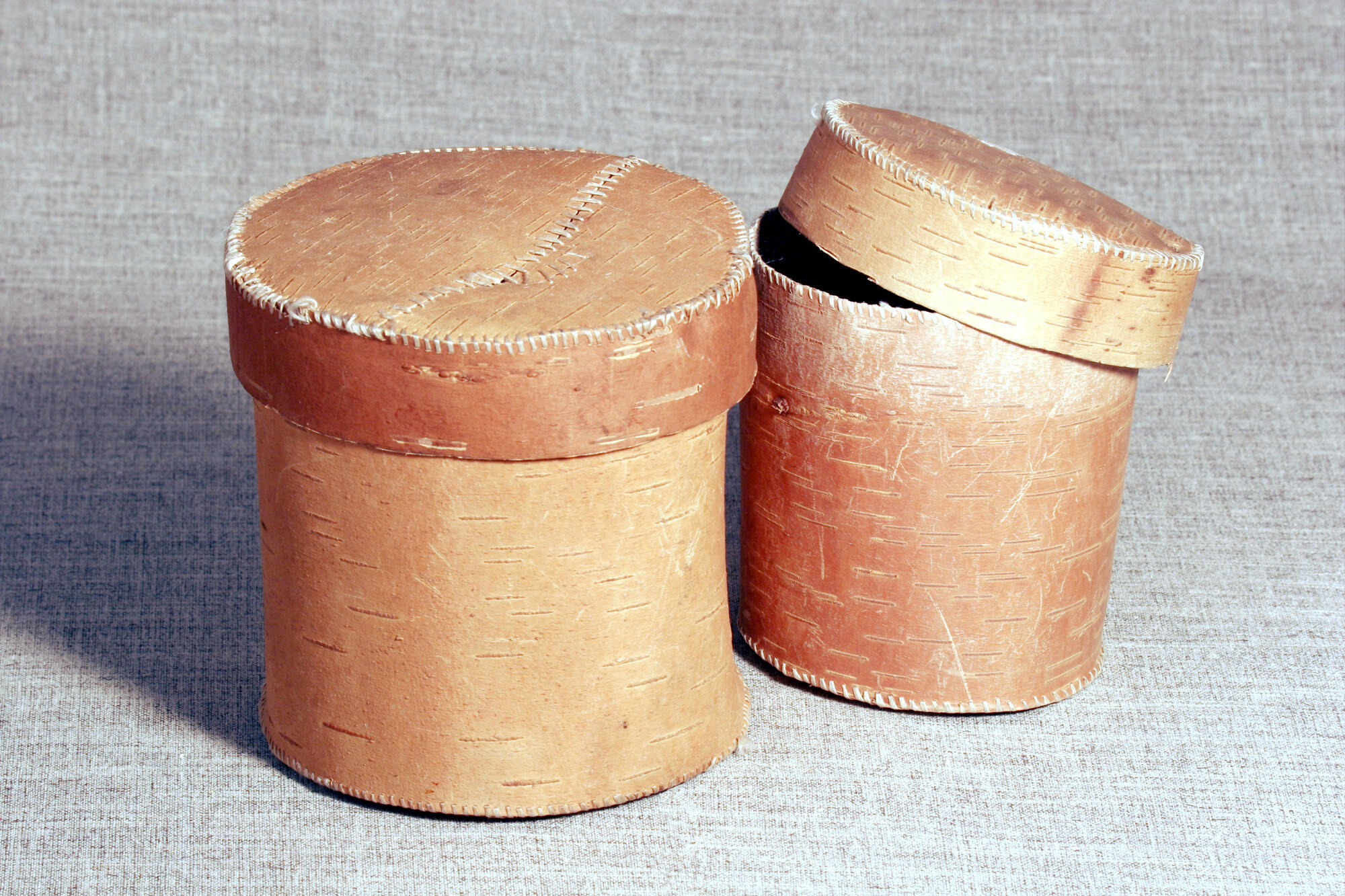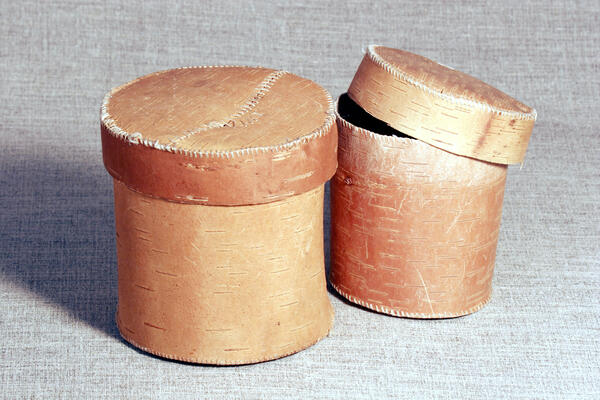For many centuries indigenous peoples of the North had been shaping their own culture, and they managed to preserve it till the present days. Traditional housekeeping under the circumstances of wild nature defined the Forest Nenets’ way of life and customs.
Household production is mostly of a consumption character by the Forest Nenets. Like all other Northern peoples, before they met Russian settlers, the Forest Nenets produced household items, kitchen utensils and toys by themselves using natural materials they could find. Most frequently is was wood, birch bark was also actively used. Nowadays, specific ethnical features of kitchen utensils are being lost. Wooden bowls are going out of use, they are replaced with enameled and plastic vessels. Traditional ladles and wooden spoons are replaced with metal ones. Copper kettles and boilers are also substituted with enameled ones. Yet birch bark utensils — boxes for berries and food containers — are still in use.
Birch bark is usually prepared in advance in summer. By this time, bark can easily be removed from a birch tree. First, the upper pellicle is peeled, then pieces of the upper layer of birch bark are rolled, placed vertically into a bowl which is filled with water, tightly closed with moss and boiled for ten to twelve hours. The bark becomes elastic and suitable for sewing. Sometimes it is also boiled in fish oil which makes it especially strong, water- and frostproof. Pieces of boiled birch bark are sewn together with solid reindeer tendons threads.
All birch bark ware is traditionally made by women. Birch bark boxes are one of a popular kinds of kitchen utensils. They are cylindric vessels with a cap and a bottom, each for its individual purpose. Flour and salt are stored in these boxes because of their unique quality: they protect food from moisture. These birch bark boxes are also used for berries collection — cloudberries, cranberries, cowberries, blueberries and bilberries are put inside. Items made of proper birch bark and sewn with reindeer tendons threads can serve for a long time.
Household production is mostly of a consumption character by the Forest Nenets. Like all other Northern peoples, before they met Russian settlers, the Forest Nenets produced household items, kitchen utensils and toys by themselves using natural materials they could find. Most frequently is was wood, birch bark was also actively used. Nowadays, specific ethnical features of kitchen utensils are being lost. Wooden bowls are going out of use, they are replaced with enameled and plastic vessels. Traditional ladles and wooden spoons are replaced with metal ones. Copper kettles and boilers are also substituted with enameled ones. Yet birch bark utensils — boxes for berries and food containers — are still in use.
Birch bark is usually prepared in advance in summer. By this time, bark can easily be removed from a birch tree. First, the upper pellicle is peeled, then pieces of the upper layer of birch bark are rolled, placed vertically into a bowl which is filled with water, tightly closed with moss and boiled for ten to twelve hours. The bark becomes elastic and suitable for sewing. Sometimes it is also boiled in fish oil which makes it especially strong, water- and frostproof. Pieces of boiled birch bark are sewn together with solid reindeer tendons threads.
All birch bark ware is traditionally made by women. Birch bark boxes are one of a popular kinds of kitchen utensils. They are cylindric vessels with a cap and a bottom, each for its individual purpose. Flour and salt are stored in these boxes because of their unique quality: they protect food from moisture. These birch bark boxes are also used for berries collection — cloudberries, cranberries, cowberries, blueberries and bilberries are put inside. Items made of proper birch bark and sewn with reindeer tendons threads can serve for a long time.


